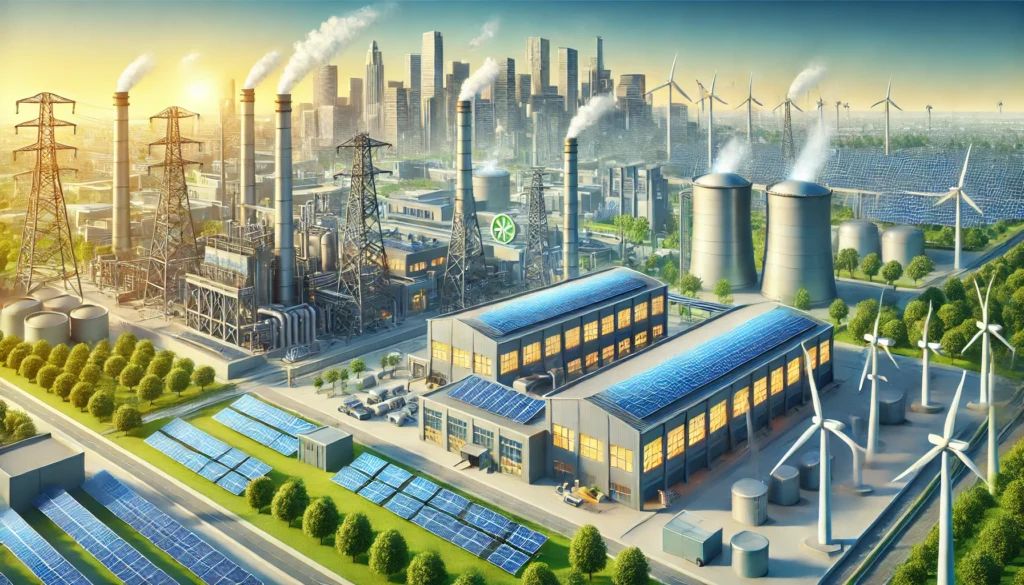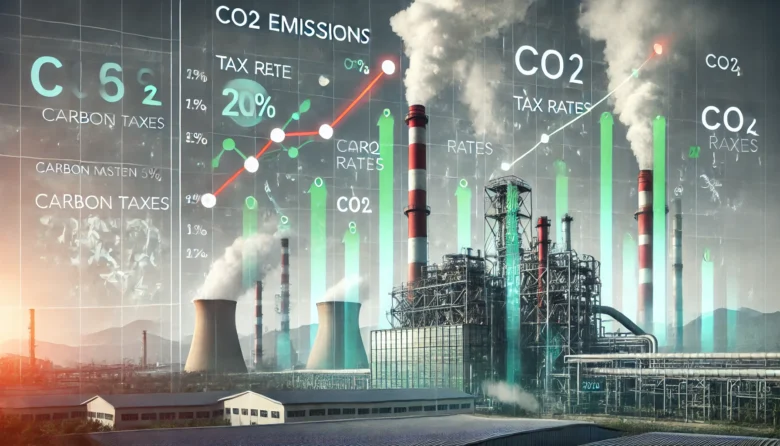Fun Fact: Did you know that around 20% of the world’s greenhouse gases are produced by just 100 companies?
As global warming continues to affect the planet, nations worldwide are finding creative ways to tackle greenhouse gas (GHG) emissions. One of the most debated yet impactful solutions is the introduction of carbon taxes. Carbon taxes work by charging businesses and sometimes individuals for the amount of carbon dioxide (CO₂) they emit, creating financial motivation for more environmentally friendly practices. But what does this mean for businesses and consumers? Let’s explore how carbon taxes shape both business and consumer behaviour in an age where environmental awareness is on the rise.
The Mechanism Behind Carbon Taxes
What Are Carbon Taxes?
A carbon tax is a fee imposed on the burning of carbon-based fuels (like coal, oil, and gas) to incentivize reducing CO₂ emissions. By setting a price on carbon, governments aim to create a system where the cost of polluting aligns with its impact on the planet.
In India, as in many countries, carbon taxes help encourage both corporations and individuals to move toward sustainable options by attaching a monetary value to carbon emissions. This approach signals that pollution is no longer just an environmental issue but a financial one, too.
Why Businesses Should Care About Carbon Taxes
For businesses, carbon taxes can create additional operational costs, especially if they rely heavily on fossil fuels. Imagine a cement factory that produces high levels of CO₂ due to its energy-intensive processes. With a carbon tax in place, every ton of CO₂ released would come with an extra cost, leading companies to consider alternatives or efficiency improvements.
Real-World Example: IKEA’s Carbon Footprint Strategy
IKEA, the global furniture retailer known for its flat-pack designs, has taken steps to reduce its carbon footprint. Through carbon pricing strategies, IKEA has committed to becoming climate-positive by 2030. It’s working to minimize emissions across its supply chain and switching to renewable energy sources. The carbon tax incentives have driven IKEA to become a model of sustainability, showing how companies can use carbon taxes as a push toward eco-friendly practices.

How Carbon Taxes Influence Business Decisions
Operational Changes
Businesses must examine their current production methods, energy sources, and overall carbon output. For example, many large companies are investing in green technology, like solar panels or electric delivery vehicles, to reduce their carbon tax liabilities. This shift not only lowers their tax burden but also improves their public image.
R&D and Product Innovation
Companies in industries like manufacturing, transport, and energy have been prioritizing research and development (R&D) to create greener solutions. Take Tata Motors in India, for instance, which has introduced electric vehicles (EVs) to reduce dependence on fossil fuels and lower emissions. Tata Motors’ EVs are a direct response to carbon tax policies, which can make fuel-intensive practices costly.
Changes in Supply Chain Practices
Carbon taxes also impact supply chains. For instance, companies might choose local suppliers over distant ones to reduce transportation emissions. The idea is to bring the sourcing closer to the destination, which is often more sustainable and economically viable.
Case Study: Unilever’s Sustainable Supply Chain
Unilever, a consumer goods company known for products like Dove soap and Lipton tea, has redesigned its supply chain with sustainability in mind. Carbon tax incentives have driven Unilever to use sustainable sources for raw materials and reduce its emissions at each stage of production.
The Impact of Carbon Taxes on Consumers
Increased Product Costs
Carbon taxes can lead to price increases in goods and services. For instance, if a clothing brand relies on coal-fired energy to manufacture its products, it will likely pass some of the tax burden on consumers. This means that eco-friendly alternatives might become more appealing to budget-conscious shoppers.
Shift Toward Eco-Conscious Products
When carbon taxes make certain items more expensive, consumers often look for alternatives. This change in how consumers make choices has fueled the rise of eco-friendly markets, such as sustainable fashion and organic food products. For example, Indian consumers are increasingly choosing electric scooters over traditional petrol ones due to lower operating costs and a smaller carbon footprint.
Increased Awareness and Responsibility
Carbon taxes also serve as educational tools. By understanding that their purchasing decisions contribute to emissions, consumers feel a greater sense of responsibility. From selecting low-emission vehicles and backing eco-conscious brands to investing in energy-efficient appliances, consumers are increasingly mindful of their environmental impact.
Challenges and Criticisms of Carbon Taxes
Despite their benefits, carbon taxes are not without controversy. Some argue that carbon taxes disproportionately impact lower-income households, as they might pay a higher percentage of their income on increased energy bills and product prices. This highlights the importance of implementing carbon taxes fairly, possibly by providing subsidies or tax credits to lower-income families to ease the burden.
Another challenge lies in ensuring that businesses don’t shift their emissions overseas to countries with fewer carbon restrictions—a concept known as “carbon leakage.” Policymakers are continually working on strategies to prevent this and ensure that carbon taxes remain effective in reducing global emissions.
The Future of Carbon Taxes
Adapting for a Greener Tomorrow
As more countries embrace carbon taxes, businesses and consumers alike will need to continue adapting. The hope is that carbon taxes will drive innovation, push companies to adopt sustainable practices, and encourage consumers to make environmentally conscious choices. For businesses, it’s about staying competitive in a market where sustainability is increasingly important. And for consumers, it’s about making choices that align with a vision for a cleaner planet.
Will Carbon Taxes Be Enough?
While carbon taxes are a powerful tool, they alone may not be enough to curb emissions entirely. A combination of carbon taxes, subsidies for green technology, and stricter environmental regulations may be necessary to make a lasting impact. The challenge lies in creating a balanced strategy that promotes sustainable practices while allowing for economic growth.
Conclusion: Why We Need Carbon Taxes
Carbon taxes serve as a financial nudge for businesses and consumers alike to make choices that benefit the environment. For businesses, this often means investing in greener technology, improving efficiencies, and redesigning supply chains. For consumers, carbon taxes encourage us to think about the impact of our purchases on the planet. Ultimately, the goal is clear: reduce emissions and create a sustainable future.
If we all play our part and adapt to these changes, carbon taxes can help us make real strides in fighting climate change. It’s not solely about covering the cost of emissions—it’s an investment in a cleaner, healthier future for the generations ahead.
Author’s Note
As we continue to confront the challenges of climate change, understanding the role of carbon taxes is essential. Let’s keep pushing for a world where sustainability and progress go hand in hand.
G.C., Ecosociosphere contributor.
References and Further Reading
- World Bank on Carbon Pricing
- Impact of Global Warming on our Nasal & Respiratory Health | Rhinaris. https://www.rhinaris.com/blog/impact-global-warming-our-nasal-respiratory-health
- market-based. https://earthwiseradio.org/tag/market-based/
- How Climate Change is Reshaping Retirement Planning · Revyo. https://revyo.com/how-climate-change-is-reshaping-retirement-planning/
- Pan-Canadian Framework on Clean Growth and Climate Change second annual report: section 6 – Canada.ca. https://www.canada.ca/en/environment-climate-change/services/climate-change/pan-canadian-framework-reports/second-annual-report/section-6.html
- Chatzikonstantinidis, K., Giama, E., Giama, E., Fokaides, P., & Papadopoulos, A. (2024). Smart Readiness Indicator (SRI) as a Decision-Making Tool for Low Carbon Buildings. Energies, 17(6), 1406.




